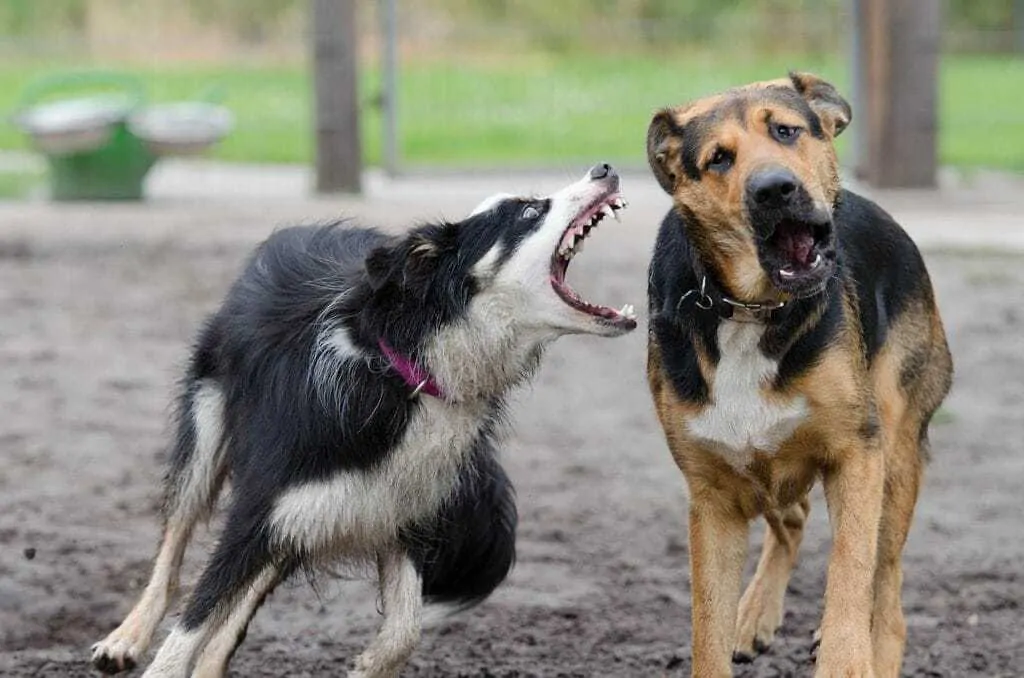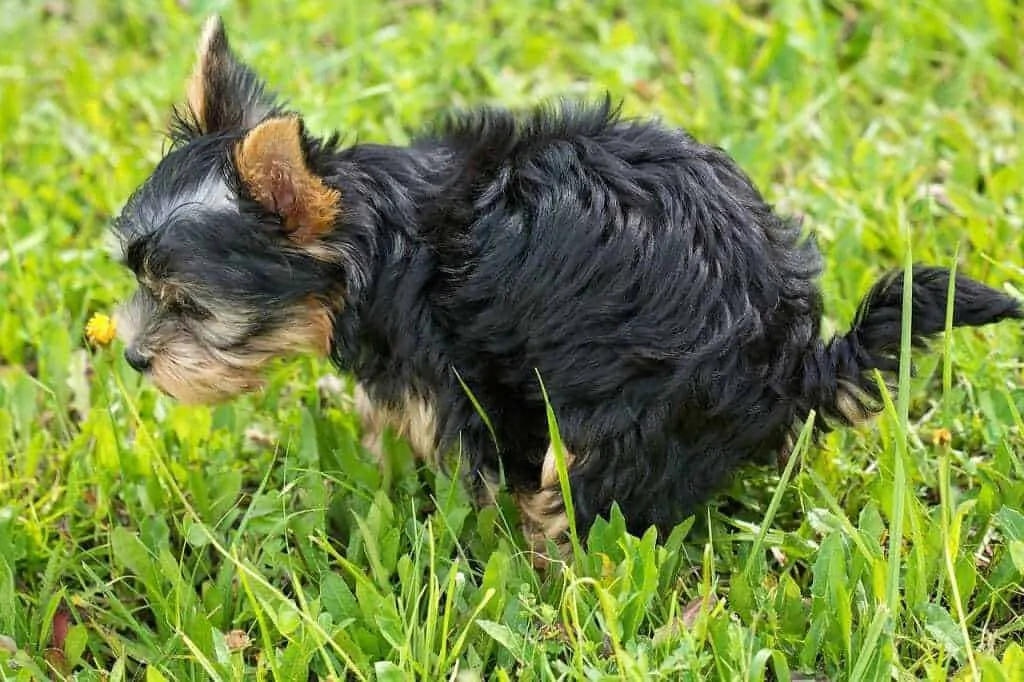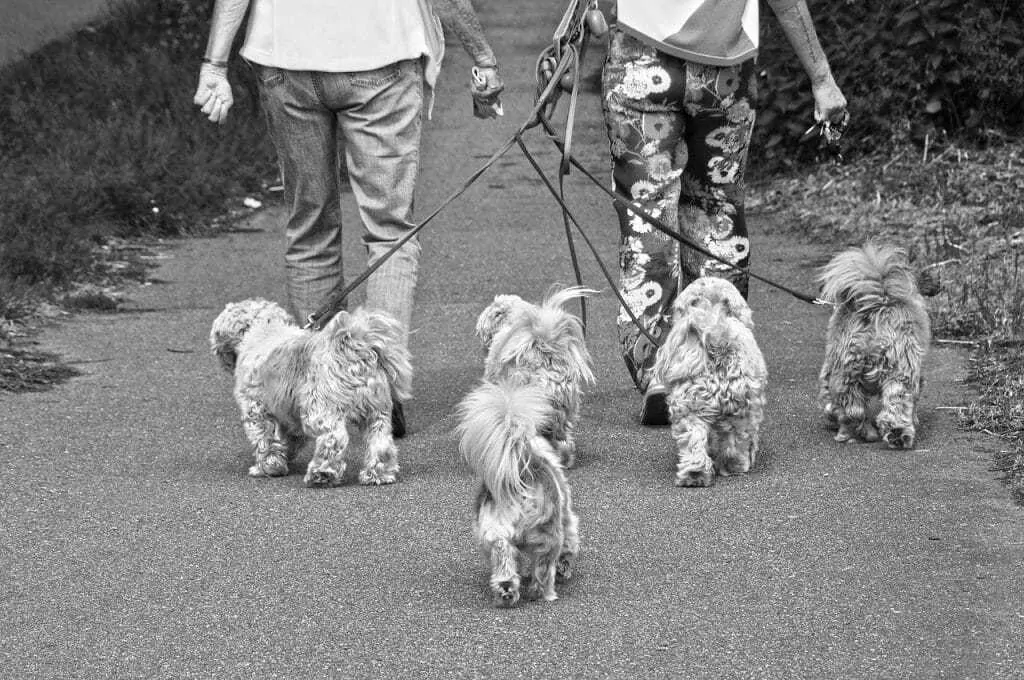In principle, dog parks sound like a fantastic idea. A secure area where your dog can blow of steam whilst having a great time playing with other doggy friends. It also means you get to socialise with other dog owners that you get to know in the dog park and don’t have to go walking for miles to tire out your high energy pooch.
The reality of it though is that there can be many more potential problems with a dog park than there are positives. There are horror stories about bad dog park experiences, from scuffles to biting to full out fights (between dogs and even owners) and there have been a number of reported fatalities.
If you follow dog park etiquette carefully, know your dog, have confidence in their ability to respond to commands and are ultra cautious and careful about who you let them interact with and when it can be a good experience but they really do have to be used with great care and consideration.
Dog parks can be a good place for your dog to socialise but careful supervision and choosing the right dog park is vital to ensure a good experience
Contents
1. Be realistic: not all dogs are suited to this environment
Some dogs may be happy to have gentle, one on one interactions with other dogs but it is a different matter when they are in an environment where there are multiple high energy dogs interacting in a rambunctious fashion.
Some dogs may love to play with other dogs but they don’t know when to rein it in and can become overly rough and intimidating to other dogs.
These dogs are not really best suited to a dog park and it would be better to find a better way to let them expend some energy.
Some dogs are not appropriate candidates for a dog park at all. Dogs that are fearful around other dogs should never be taken to a dog park. The commonly quoted myth that they will just have to get used to it or that they won’t lash out when they are in amongst a large group just don’t cut it.
Not only can this be very traumatic for them, making their fear worse, but their fearfulness can make them react aggressively towards other dogs in their attempts to get them to leave them alone. This is not fair on your own dog or on the other dogs in the park.
Not all dogs are suited to the dog park environment. Some dogs would prefer a solo game of fetch with their owner instead of being faced with a group of high energy dog
2. Pick a well-managed park
It is not just about the interaction with the other dogs, every dog park is different in how they are laid out, built and managed and this can make a huge difference in terms of safety and suitability.
If there is not an appropriate amount of open space this can cause huge problems. An overcrowded dog park is a recipe for disaster. Parks with more enrichment are better, look for varied terrain and different types of areas. Too many excited dogs in a small and boring space can result in scuffles breaking out more easily.
It is also important to ensure the dog park is well maintained. If there are breaks in the fence dogs could easily escape. Always have a good look when you first enter a dog park to ensure that there are no escape routes or other hazards around the space.
A good dog park will also have separate space for the small and big dogs.
Some private parks are supervised by staff and this is often the sign of a very well managed dog park.
Make sure the park grounds and fencing is well maintained to avoid injury or escape incidents
3. Gate etiquette
Before entering the dog park take a few minutes to observe the dogs that are already in the space, especially if they are ones you and your dog have not had any interaction with before. If there are any with owners that are not closely supervising or that appear to be behaving inappropriately, be sensible and give your dog alternative exercise that day. It just isn’t worth the risk.
When you are entering be considerate of the other dogs and their owners. Make the owners aware you are entering and come in quickly and with minimal fuss when the other dogs are far away from the gate to avoid any escapees and to minimise the chances of your dog being overwhelmed by a sudden onslaught of excited dogs.
If your dog is already off the leash, try to call them back to avoid them rushing the gate and the other dog and owner. This can be one of the times that scuffles are most likely to break out. A rush of dogs approaching can be very intimidating and increase the chance of negative interactions.
If someone new is coming in with their dog call your dog to you and have a quick chat with the new park users and carefully supervise initial interactions. You may know your dog and how they are likely to behave with other dogs but you can’t legislate for other dog owners being just as responsible.
4. Know doggy body language
This is so important in a dog park as negative interactions between dogs can escalate in a seemingly startlingly fast fashion.
Before you even go in, you should be watching the other dogs already inside to see if they are using body language that indicates they are frightened or uncomfortable.
It is rare for a fight to just come completely out of the blue. There will usually have first been other subtle signs that one of the dogs is uncomfortable with the interaction. It is your job to look out for these signs and intervene before things escalate.
Some commons signs that your dog is uncomfortable include:
- Avoidance; trying to escape to a safe place or just avoiding eye contact and turning away.
- Frequent lip licking or yawning. This is an appeasement behaviour and a sign that they feel uncomfortable.
- Tucked tail and tense body posture
- Rolling over to expose their belly. This doesn’t always mean they want a tummy tickle. It is a submissive posture and can be a sign that they are feeling uncomfortable.
- Raised hackles (the hair along their spine)
- A tense, stiff or still body posture
- Obviously growling
It is really important to be able to read the subtle body language signals not just waiting for a fight to break out
5. Bullying behaviour is all too common
There are frequently dogs that exhibit bullying behaviour in dog parks. Often owners just think their dog is just being rambunctious and the other dog is tolerating it so what is the problem.
Not only is it not good to encourage bullying behaviour as this can quickly escalate but it is not fair on the other dog. They may be tolerating it but if the behaviour truly is bullying it is not fair to subject them to this, it is not fun for them.
This is where understanding dog body language is crucial and also being honest with yourself about what sort of behaviour your dog is actually showing.
A dog that is overly rough and too persistent with their behaviour towards another dog when the other dog is obviously uncomfortable is likely finding this rewarding and so it is classed as bullying behaviour. They may be constantly trying to hump or they may not take no for answer and continue to body slam or pull at ears when they are being asked not to.
This sort of behaviour is not appropriate in a dog park and for dogs like this, it may be better to exercise them elsewhere or to work on getting more appropriate interactions first (out of the dog park environment though).
If your dog is constantly pestering other dogs when it is clear they are not happy or being overly rough then a dog park is perhaps not the right environment for them to be exercised
6. Over stimulation – this can be a real problem in a dog park
You may think it is great to see your dog tiring themselves out in a dog park. It is an enclosed space, they are having fun and that is what it is designed for right?
Some dogs can get really over excited in a dog park. They will play for the entire time they are in there with no calm time and they can get really hyped up. This is not a great state of mind to stay in for a prolonged period. Being hyped up like this can make it easier for small things to then trigger a more extreme reaction and it can be difficult to get them to calm down afterwards.
If this is the only interaction that your dog has with other dogs it will mean they are likely to get very over excited whenever they see other dogs rather than able to greet calmly.
If your dog does get like this in a dog park it may be better to avoid them and work on achieving a calm greeting with other dogs in a different, more easily controlled environment.
Whilst it can be good to let the dogs enjoy a good run with one another if your dog is always in a heightened state of over arousal this is not necessarily healthy. Encourage rest breaks and periods of calm play
7. Know when to step in and stay vigilant
It is really important that you feel confident in being an advocate for your dog and being ready to step in and take action if you feel that a situation could be troublesome.
Be a responsible owner and make sure you focus on your dog and don’t just use the dog park as a nanny area for your dog. You need to be alert and watching the interactions that are taking place so that you can step in if you notice your dog becoming uncomfortable or becoming too boisterous. Don’t spend the whole time on the phone or deep in conversation with other park visitors and take your eye off the ball!
If the other park users do not have just as much vigilance then it is probably not the place for you and your dog as you are also relying on them stepping in when their dog’s behaviour is inappropriate too.
Supervise interactions carefully and know when to step in
8. What if the worst happens – how to break up a dogfight
God forbid that this would happen but, being realistic, dog fights do occur in dog parks so it is better to be forewarned and forearmed.
Trying to break up a dog fight without knowing how to manage it usually results in the owners getting injured too, sometimes seriously.
Shouting will usually fall on deaf ears, dogs that are in fight mode will not respond. Sometimes it can actually make things worse. If your dog is already stressed and they hear aggressive shouting it can make them react more aggressively out of fear or extra arousal.
I am never a proponent of the use of aversives when it comes to dogs but when trying to break up a dog fight this is one time when they may be appropriate.
Blasting the fighting dogs with a strong hose water jet can be an effective method if there is a hose in the dog park that is. Some people have been known to use a fire extinguisher too, although this is unlikely to be available in a dog park!
Deafeningly loud air horns can be enough to startle dogs into stopping their fight. Some well-managed dog parks may have this sort of equipment (some daycare centres also use these).
Sometimes using a physical barrier, like a piece of plywood to separate the dogs can be effective or using a blanket or large coat to cover the dogs and reduce the arousal levels.
I have heard some trainers and dog walker friends mention they have had success with a rather drastic but seemingly effective method. Pushing a thumb forcefully up the dog’s rectum usually causes such shock that the dog stops fighting. This would usually involve trying to have someone grab hold of the collar of the other dog though and this can be difficult/risky so it should be done with care.
If a fight does start, try not to immediately jump in there to break it up with your own hands. Stop, breathe, evaluate, check what items are on hand and go from there.
A powerful hose can be a useful tool to help break up a dog fight
9. Make sure they know basic commands, especially recall
Having a rock solid recall is vital in a dog park. There may be situations when you want to get your dog back to you quickly, particularly if there is trouble brewing amongst the group of dogs. If you don’t already have this, I would recommend working on this before you decide whether to visit a dog park. For more tips on how to achieve a great recall visit our Recall Article.
Using treat rewards inside the dog park is not always recommended though. If there are a lot of dogs in the park or dogs that you don’t know the introduction of food can create tensions or guarding behaviours that you may not be aware of. Save the treats for the training sessions, the dog park is not the place for working on changing behaviours.
10. Introduce an adolescent dog with extra care
Puppies under 4 months should never enter a dog park. They need to have had all their vaccinations and need to have the appropriate time after them before interacting with new dogs. For a young puppy, this sort of environment is not the best way to introduce them to socialisation. It would be better in a much more controlled environment with dogs that you know and not with large groups playing in a potentially out of control fashion. If a dog behaves inappropriately with a young puppy this can have a traumatising impact and set their socialisation back majorly.
Do also be aware that even older adolescent dogs may not be best suited to a dog park. Sometimes their play can be slightly rude and too over-excitable, this can test the patience of the older, more sensible dogs. If you do have an excitable adolescent, make sure that you supervise them closely and step in if they are being annoying to other dogs.
Puppies should not go to a dog park until they are at least four months and we would recommend waiting until they are a bit older and that their first experiences of socialising with other dogs once they are home with you are on a smaller, more easily controlled basis
11. Your dog must be spayed/neutered
This goes without saying really. Not only is this important to avoid any potential ‘accidents’, but a non neutered dog may also be more likely to be ruled by their hormones amongst a larger group of dogs and this can increase the chances of a testosterone-fuelled encounter
12. Scoop that poop
It may seem obvious but it is surprising the number of people that break this rule! Be considerate of other dog park users and keep a close eye on your dog so you can swoop in and pick up their poop with poop bags before another dog treads in it and then jumps up on their unsuspecting owner! Some dogs have the bad habit of eating poop too and you really want to minimise this from happening!
Don’t forget to be vigilant and pick up your dog’s poop
13. It is not a good environment for small children
Most dog parks have rules in place stating that children under a certain age are not allowed in. This is for good reason too. A group of excitable, rough playing dogs could easily knock a child off their feet and even if they don’t it can be a bit intimidating for a young child to be in this environment.
It is nice to give your children positive outdoor interactions with their dog but perhaps playing fetch in a quiet park would be a better option than a frenetic dog park.
14. If you are worried about your dog’s health or they are recovering from an illness don’t go!
If you have had a dog that has had kennel cough or a recent bout of diarrhoea, it is really important that your dog has a clean bill of health and an appropriate length of time to recover before heading back to the dog park. You don’t want to be responsible for spreading an illness amongst the other pooches your dog is interacting with.
The other thing is that if your dog is recovering from an injury and they are still suffering from pain they may react differently than they normally would to other dogs in the park. If they are worried about rough play hurting them they may be more likely to lash out.
A dog park is not a suitable environment for a recently sick or injured dog
15. Positive works with people too – try not to be defensive or aggressive
Fights don’t just break out between the pooches in dog parks. There are often ugly exchanges between owners when things go wrong. We all know that we love our dogs and we can be protective over them.
If a scuffle or incident does occur between your dog and another, it is much better to try to handle the issue in a calm, polite and non-defensive manner. Getting too angry, argumentative or aggressive is not going to help the situation.
Be ready to apologise and accept an apology too and know when it is time to bow out gracefully and just find somewhere else more appropriate to exercise your dog.
16. Don’t go with too many dogs
Dog Parks are not a good place to take your group of dogs if you are a dog walker but it is actually a surprisingly common practice. Many good dog parks have rules about the number of dogs to humans ratio but some don’t and some people break the rules regardless.
You really do need to be constantly supervising your dog’s interaction in this sort of environment and if you have more than two dogs under your charge this becomes extremely difficult to do. If you have more than two dogs, make sure you take extra dog-savvy friends or family along with you to help out.
If you are a dog walker or you have multiple dogs, unless you have other people to help you with the supervision, going to a dog park with more than one or two dogs is not a good idea and is often not allowed anyway
17. Don’t let the barking get out of control
Some dogs can start to get frantic with their barking when they are over excited. Not only is this not a good thing if the dog park is in a busy public space but it can also encourage your dog to become more vocal in general. If your dog is getting into frantic barking more, call them away from the group and reward their quiet behaviour.
18. Why not stick to enriching solo walks or with groups of trusted and known dog walking chums
If you are concerned about whether your dog will fit in at a dog park or you feel nervous about the unknown of other owners and dogs why not just find alternative options to help your dog release some of their energy. If a normal walk is just not enough you could always introduce them to agility or obedience training or perhaps you could get involved in Cani-X (running with your dog).

Gemma is an official dog nut and passionate traveller. Originally from the wonderful city of Edinburgh in Scotland, Gemma is now wandering across Europe with her rescue dog Annie. For ten years Gemma loved being surrounded by all things canine 24/7 whilst she ran a specialist doggy shop. The shop was a great community hub and, along with working closely with local rescues, Gemma provided customer support relating to canine behaviour and nutrition. It was a passion project and one that Gemma felt privileged to have created. She is also studying towards an Advanced Diploma in Canine Behaviour and is a huge advocate of dog rescue and promoting scientific methods of dog training.











